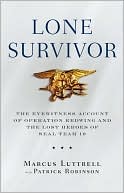The Cybernetic Theory of Decision: New Dimensions of Political Analysis
In this classic work, John Steinbruner argues that the time is ripe for exploration of a new theoretical perspective on the decision-making process in government. He suggests that the cybernetic theory of decision as developed in such diverse fields as information theory, mathematical logic, and behavioral psychology generates a systematic but non-rational analysis that seems to explain quite naturally decisions that are puzzling when viewed from the rational perspective. When combined with...
Search in google:
In this classic work, John Steinbruner argues that the time is ripe for exploration of a new theoretical perspective on the decision-making process in government. He suggests that the cybernetic theory of decision as developed in such diverse fields as information theory, mathematical logic, and behavioral psychology generates a systematic but non-rational analysis that seems to explain quite naturally decisions that are puzzling when viewed from the rational perspective. When combined with the basic understanding of human mental operations developed in cognitive psychology, the cybernetic theory of decision presents a striking picture of how decision makers deal with the intense uncertainty and fundamental value conflicts that arise in bureaucratic politics. To illustrate the advantages of using cybernetic theory, Steinbruner analyzes the issue of sharing nuclear weapons among the NATO allies. I. M. Destler - Arms Control Today Likely to prove one of those few path-breaking efforts of conceptual synthesis which will be influencing our thinking about government and policy-making for many years to come.
List of FiguresPreface to the Second Paperback EditionPrefaceCh. 1Introduction3Pt. 1Paradigms of the Decision ProcessCh. 2The Analytic Paradigm25Ch. 3The Cybernetic Paradigm47Ch. 4Cognitive Processes88Ch. 5Politics and Policy140Pt. 2The Politics of Nuclear Sharing: 1956-1964Ch. 6Strains in the Alliance: Genesis of a Two-Value Problem153Ch. 7The Development of Nuclear Sharing Proposals: 1956-1960173Ch. 8The Rise of the Multilateral Force: 1961-1963199Ch. 9Ascendancy and Sudden Death of the Multilateral Force: 1963-1964248Ch. 10Epilogue: Conclusions and Implications327Bibliography343Index361
\ Foreign AffairsA stimulating and challenging work, almost two books in one, which applies cybernetics and psychology to the politics of the multilateral nuclear force and the nuclear sharing issue in the period of 1956-1964. Steinbruner's important and creative study successfully adds a new dimension to our understanding of decision-making.\ \ \ \ \ Arms Control TodayLikely to prove one of those few path-breaking efforts of conceptual synthesis which will be influencing our thinking about government and policy-making for many years to come.\ — I. M. Destler\ \ \ Arms Control Today\ - I.M. Destler\ Likely to prove one of those few path-breaking efforts of conceptual synthesis which will be influencing our thinking about government and policy-making for many years to come.\ \ \ \ \ Arms Control Today\ - I. M. Destler\ \ Likely to prove one of those few path-breaking efforts of conceptual synthesis which will be influencing our thinking about government and policy-making for many years to come.\ \








